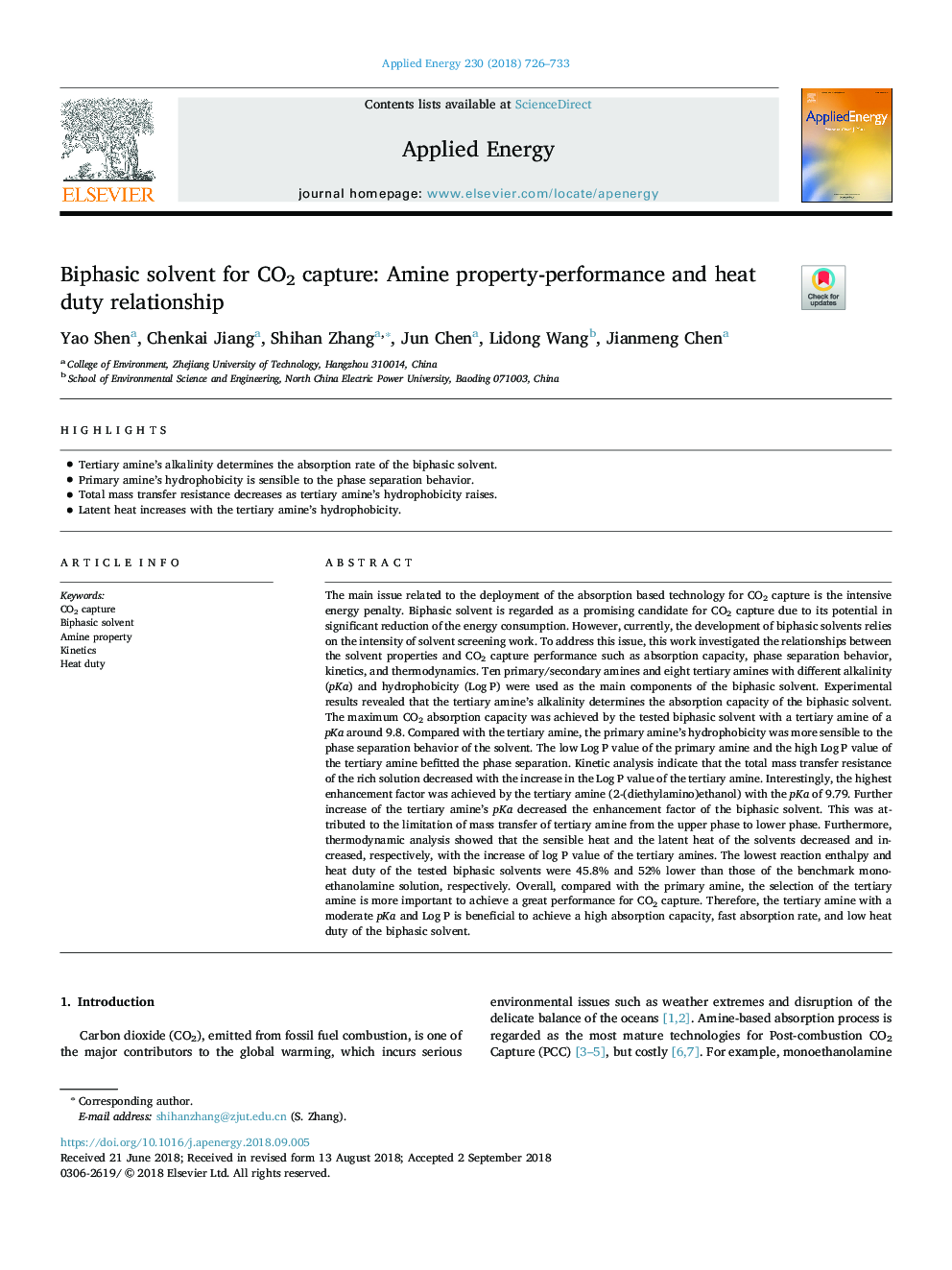| Article ID | Journal | Published Year | Pages | File Type |
|---|---|---|---|---|
| 10131384 | Applied Energy | 2018 | 8 Pages |
Abstract
The main issue related to the deployment of the absorption based technology for CO2 capture is the intensive energy penalty. Biphasic solvent is regarded as a promising candidate for CO2 capture due to its potential in significant reduction of the energy consumption. However, currently, the development of biphasic solvents relies on the intensity of solvent screening work. To address this issue, this work investigated the relationships between the solvent properties and CO2 capture performance such as absorption capacity, phase separation behavior, kinetics, and thermodynamics. Ten primary/secondary amines and eight tertiary amines with different alkalinity (pKa) and hydrophobicity (Logâ¯P) were used as the main components of the biphasic solvent. Experimental results revealed that the tertiary amine's alkalinity determines the absorption capacity of the biphasic solvent. The maximum CO2 absorption capacity was achieved by the tested biphasic solvent with a tertiary amine of a pKa around 9.8. Compared with the tertiary amine, the primary amine's hydrophobicity was more sensible to the phase separation behavior of the solvent. The low Logâ¯P value of the primary amine and the high Logâ¯P value of the tertiary amine befitted the phase separation. Kinetic analysis indicate that the total mass transfer resistance of the rich solution decreased with the increase in the Logâ¯P value of the tertiary amine. Interestingly, the highest enhancement factor was achieved by the tertiary amine (2-(diethylamino)ethanol) with the pKa of 9.79. Further increase of the tertiary amine's pKa decreased the enhancement factor of the biphasic solvent. This was attributed to the limitation of mass transfer of tertiary amine from the upper phase to lower phase. Furthermore, thermodynamic analysis showed that the sensible heat and the latent heat of the solvents decreased and increased, respectively, with the increase of log P value of the tertiary amines. The lowest reaction enthalpy and heat duty of the tested biphasic solvents were 45.8% and 52% lower than those of the benchmark monoethanolamine solution, respectively. Overall, compared with the primary amine, the selection of the tertiary amine is more important to achieve a great performance for CO2 capture. Therefore, the tertiary amine with a moderate pKa and Logâ¯P is beneficial to achieve a high absorption capacity, fast absorption rate, and low heat duty of the biphasic solvent.
Related Topics
Physical Sciences and Engineering
Energy
Energy Engineering and Power Technology
Authors
Yao Shen, Chenkai Jiang, Shihan Zhang, Jun Chen, Lidong Wang, Jianmeng Chen,
